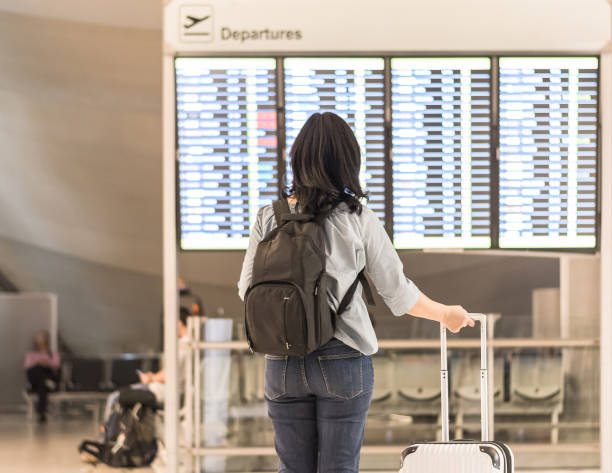HOW TO DEAL WITH TURBULENCE | FLIGHTLAYAWAY
Flightlayaway
Travel Tips
Turbulence can be frightening. However, the reality is that
turbulence is no cause for concern! It’s a common part of flying that many
people experience each day. Even when it’s at its most severe, turbulence is
rarely dangerous.
Having said that, when the plane that you’re flying on
suddenly moves and dips while soaring at 37,000 feet in the air, we can’t blame
you for feeling at least a little bit uneasy.
That’s why we at Flightlayaway have come up with 10 useful
tips that will help you overcome your fear of turbulence and put you at ease on
your next flight.
1)
Understand why turbulence occurs
Turbulence can be caused by a number of things. It may be
air in the atmosphere, jet streams that trigger changes in the wind, flying
above mountains or tall buildings that change the wind flow in the sky above or
something else that can cause the airflow to change. Regardless of the cause,
it’s important to remember that turbulence is caused by a change in the airflow
and not because something is wrong with the aircraft itself.
2) Know
the facts and stats
A lot of the anxiety around turbulence comes from people assuming the worst and thinking that turbulence will cause their plane to crash.
In reality, even the most severe turbulence almost never causes plane crashes. The last time that turbulence was determined as the main cause of a plane crash was in 1966, over 50 years ago!
Since then, modern-day engineering and advanced technology have given pilots a better understanding of when to expect turbulence, allowing them to take alternative routes to avoid it. What’re more, improved designs of modern-day aircraft has allowed the planes of today to better deal with and be less susceptible to the effects of turbulence.
According to America’s Federal Aviation Administration (FAA), on average, there are 33 injuries caused by turbulence in the US each year (2002–2018). When you consider that more than 959 million passengers fly to and from the US each year, you get a great understanding of how small the danger of turbulence really is.
3) Buckle
up
While it’s important to stick to the rules and fasten your seatbelt any time that the seatbelt sign is on, it’s especially important to keep it fastened during periods of turbulence, regardless of how light or extreme the turbulence may seem.
Although turbulence isn’t going to force you entirely out of
your seat, you might momentarily lift up and shift side to side. Fastening your
seatbelt will minimize the impact of this and ensure that you don’t hurt
yourself or those around you.
4) Have
faith in your pilot
Not only are pilots highly skilled and expertly trained to fly through turbulence, but as mentioned previously, the pilots of today also have an excellent understanding of the weather conditions for each flight route before they take off thanks to modern technology.
Before every flight, pilots will study the forecast of the flight route and, when possible, change their course to avoid areas with extreme turbulence.
5)
Breathing exercises
If you do experience turbulence and feel yourself begin to panic, controlling your breathing is a great way to calm yourself down and prevent you from any further distress.
Licensed Psychotherapist and owner of Create Your Life Studio, Christine Scott-Hudson, recommends a specific breathing exercise that stimulates your vagus nerve, “you can stimulate your Vagus Nerve by taking deep, long breaths. Allow your diaphragm to expand your belly as you breathe. The vagus nerve is an activator of your Parasympathetic Nervous System or PNS for short. Your PNS is responsible for keeping you safe and alive and it handles all of the bodily processes that you don't even have to think about, like controlling your heart rate, helping you digest food, and getting a good night's sleep.
Let your exhale be twice as long as your inhale to help you relax. Breathe in through your nose and breath out through your mouth. Your deep, long breaths stimulate your vagus nerve and spark your PNS to release acetylcholine, a neurotransmitter that promotes feelings of general well-being and safety.”
6) Do an
activity to put your mind elsewhere
If the turbulence isn’t too severe, try and focus your mind
on something else like reading a book, enjoying the in-flight entertainment, or
even a word puzzle or sudoku. By forcing your mind to focus elsewhere, the
turbulence will most likely pass without you even realizing it.
7) Sit in
a seat that is good for avoiding turbulence
While turbulence itself is sometimes unavoidable, you can pre-book a seat so that you’re sat in an area of the plane that is less affected by turbulence.
The best seats for turbulence
The best seats for turbulence are at the front of or at the wings of the plane.
The impact of turbulence is felt less at the front of the plane because it’s beyond the center of gravity on the aircraft. Alternatively, turbulence is also less noticeable near the wings of the plane because the wings allow the plane to stay balanced.
The best plane for turbulence
There’s no specific rule or data that supports that one aircraft model is better than another at dealing with turbulence. However, generally, the larger the plane, the better it is at absorbing turbulence. For example, due to the sheer size, aircraft like the Airbus A380 and Boeing 747 are said to be two of the best planes for coping with turbulence.
That’s not to say that bigger planes are always better at dealing with turbulence, though. For example, early models of the Boeing 757 — which is one of the largest planes used on short-haul flights — has a history of being susceptible to turbulence.
Tip: At Flightlayaway, you can see which aircraft you’ll be flying on when you book your flight.
8) Fly at
times when turbulence is less severe
As well as sitting in certain areas of the plane, you might
also want to consider flying at times when turbulence tends to be less severe.
Best time to fly to avoid turbulence
According to airline captain, Laura Einsetler, early in the
morning is the best time to fly to avoid turbulence. She told us “The key to
turbulence avoidance is to take very early flights. The air is normally much
smoother because it is cooler and denser."
9) Avoid
the most turbulent flight routes
If you need or want to visit a certain destination and turbulence on that flight route is common, you might have no choice but to take that flight route and deal with the turbulence.
However, if you’re looking to go away and haven’t decided where you want to visit, it might be a good idea to choose a destination that requires you to take a flight route with not much turbulence. For example, statistically, flights that stay away from the equator and fly over large areas of water or flat areas of land experience less turbulence than those that don’t.
Tip: Take a look at our page on the most and least turbulent
flight routes for more information.
10) Speak
to your doctor
If you’re really worried about turbulence, ask for advice
from your doctor. They might be able to advise you with some breathing and
mental exercises to help better deal with the anxiety and, in some cases, might
prescribe you with anti-anxiety and anti-nausea medication that will help you
overcome the fear of turbulence.







Comments
Post a Comment